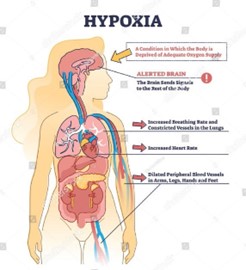A client with a chest tube wishes to ambulate to the bathroom. What is the appropriate nursing response?
'It is unnecessary for you to go to the restroom at this time."
'I can assist you to the bathroom and back to bed."
'I cannot assist you at this time, please wait until I finish what I’m doing”.
'You cannot go to the bathroom.'
The Correct Answer is B
Chest tubes are inserted to drain fluid, blood, or air from the pleural space, which is the space between the lung and the chest wall. It is important to ensure that the chest tube is secured properly and the drainage system is functioning properly before the patient is ambulated. Additionally, the patient may experience discomfort or pain during ambulation, so it is important to assess and manage the patient's pain before and after ambulation.
Option A is not appropriate because it disregards the patient's need to use the restroom and may make the patient feel helpless or dependent.
Option c is not appropriate because it does not address the patient's request for assistance and may make the patient feel neglected or uncared for.
Option d is not appropriate because it is a directive statement that does not take into account the patient's autonomy or individual needs. It is important to involve the patient in the decision-making process and provide appropriate care based on their individual needs and preferences.

Nursing Test Bank
Naxlex Comprehensive Predictor Exams
Related Questions
Correct Answer is B
Explanation
When someone has asthma, their lungs may produce a wheezing sound when they breathe in and out. Narrowed airways and restricted air movement through the lungs may be responsible for the wheezing sound.

Correct Answer is A
Explanation
A. Respiratory acidosis.
COPD is a chronic lung disease that can lead to an accumulation of carbon dioxide (CO2) in the body. This can cause respiratory acidosis, a condition in which the blood pH is lower than normal due to an excess of CO2.
In respiratory acidosis, the partial pressure of carbon dioxide (PaCO2) in the blood is increased and the pH is decreased. The kidneys atempt to compensate for the acidosis by excreting more acid in the urine and retaining more bicarbonate, but this compensation is usually not enough to fully correct the problem.
Metabolic alkalosis (option B) is a condition in which the blood pH is higher than normal due to an excess of bicarbonate in the blood. This is usually caused by loss of acid from the body, such as through vomiting or use of diuretics.
Respiratory alkalosis (option C) is a condition in which the blood pH is higher than normal due to a decrease in PaCO2. This can be caused by hyperventilation, which leads to excessive elimination of CO2 from the lungs.
Metabolic acidosis (option D) is a condition in which the blood pH is lower than normal due to an excess of acid in the blood. This can be caused by a variety of factors, including kidney failure or lactic acidosis.
Whether you are a student looking to ace your exams or a practicing nurse seeking to enhance your expertise , our nursing education contents will empower you with the confidence and competence to make a difference in the lives of patients and become a respected leader in the healthcare field.
Visit Naxlex, invest in your future and unlock endless possibilities with our unparalleled nursing education contents today
Report Wrong Answer on the Current Question
Do you disagree with the answer? If yes, what is your expected answer? Explain.
Kindly be descriptive with the issue you are facing.
